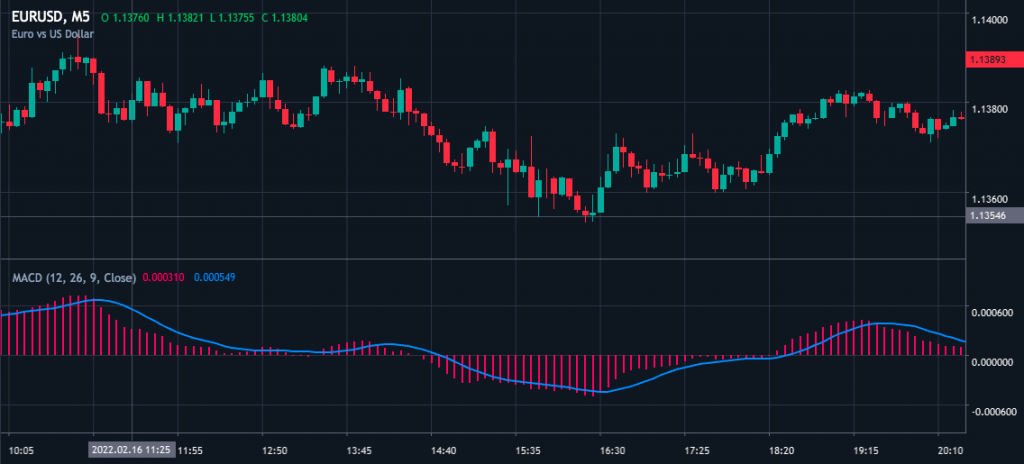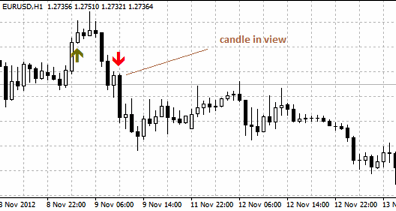Binary Options Strategy
Welcome to our binary options strategy section. Here you will find a beginners guide to strategies, leading on to more advanced information about things like money management, and articles on specific strategies.
A trading strategy is crucial when using binary options. Managing risk control, timing and value all become clearer when backed with a strategy.
Best Brokers for Strategy-Based Trading
Basic Strategy For Successful Trading
Strategy is one of the most important factors in successful binary options trading.
It is the framework from which you base your trade decisions, including your money management rules, and how you go about making money from the market.
There is no one Holy Grail unfortunately, if there were then we’d all be using it!
The two most very basic categories of strategy are:
- Fundamental
- Technical.
Fundamental strategies focus on the underlying health of companies, indices, markets and economies and while important to understand, is not as important to binary options as the technical aspect of trading.
Technical trading, or technical analysis, is the measurement of charts and price action, looking for patterns and making educated guesses, speculations, from those measurements and patterns.
Strategy simplifies your trading, takes guesswork out of choosing entry and reduces overall risk.
The text book definition reads like this; a plan of action designed to achieve a goal or overall aim, the art of planning and directing operations in order to achieve victory. When it comes to trading the goal is to 1) make money and 2) not lose money.
The number one method of achieving this goal is to use a rules based approach to choosing entries that relies on ages old, tried and true technical analysis indicators.
There are dozens, possibly hundreds if not thousands, of ways to trade the market, all strategies.
Types Of Strategy
They can be categorized in terms of the tools used, the time frames intended, the amount of risk associated with and many other ways, these being the primary.
- Price Action/Scalping Strategies – Price action strategies rely on the movement of the market to time entry. These can be trend following or not, long or short term and utilize bullish or bearish positions.
- Trend Following/Directional Strategies – Trend following strategies target assets that are trending strongly to pinpoint a series of profitable entries with a high rate of success.
- Range Bound/Short Term Strategies – 99% of the time the market, or an individual asset, is not trending but trading in a range within a high and low mark. These strategies focus on support and resistance levels, reversals within the range and short term trends as asset prices move up or down from support to resistance and vice versa.
- Long Term/Momentum Strategies – These are the less risky of the strategies as they target stronger signals and longer term time frames. These signals have a higher chance of success but take longer to develop and longer to unfold than other types of signals.
A technical analysis indicator is, most often, a mathematical formula which converts price action into an easy to read visual format. Common types of indicators include but are not limited to moving averages, trend lines, support and resistance, oscillators and Japanese Candlesticks.
Money Management
Strategy is 1 of the 2 pillars of risk management, the other is money management. You control risk by targeting only good signals, weeding out obviously bad signals, and never putting so much money on one trade that it will wipe out your account.
Money management is the control of your overall trading fund. It should clarify trade size, and long term financial management – leaving you to focus only on trading.
A well thought out money management structure should simplify:
- Trade size
- Risk management
- Future growth
- Stress
A trader with a clear financial plan should not need to be concerned with whether they can trade tomorrow, or if their trade size is correct or how they might grow investments in line with their progress.
All those decisions are controlled by managing their overall capital with a clear plan.
Read more on money management.
Japanese Candlesticks
This is the most common method of viewing price charts. The candlesticks give an easy to read view of prices, open high low and close, that jumps off the charts in way that no other charting style can do.
They are the basis of most price action strategies and can be used to give signals as well as to confirm other indicators.
Read more about candlestick strategy
Support And Resistance
These are areas of price action on the asset chart that are likely to stop prices when they are reached. Support is found when prices stop falling, this happens when buyers step into the market and are said to be “supporting prices”.
Resistance is found when prices stop rising, this happens when sellers enter the market (or buyers disappear) and are said to be “resisting higher prices”.
These areas, often represented by horizontal lines, are good targets for entries and possible areas where price action may reverse.

Trend Lines
These lines connect highs and lows formed by asset price as it moves up down and sideways.
A series of higher lows and higher highs is considered to be an uptrend and a sign that prices are likely to move higher, a series of lower highs and lower lows is considered to be a downtrend and a sign that prices are likely to move lower.
The trend line can be used as a target for support and resistance, as well as a an entry point for trend following strategies.
Moving Averages
Moving averages take an average of an assets prices over X number of days and then plots those values as a line on the price chart.
Moving averages come in many forms and are often used to determine trend, provide targets for support and resistance and to indicate entries.
There are dozens of methods of deriving moving averages, the most common include Simple Moving Averages, Exponential Moving Averages, volume weighted moving averages and many more.
They can be used in any time frame, and set to any time frame, for multiple time frame analysis and to give crossover signals.

MACD Offers Strategy Opportunities
Oscillators
Oscillators may be the single largest division of indicators used for technical analysis. They include tools like MACD, stochastic, RSI and many, many others.
These tools, in general, use price action and moving averages in a combination of ways to determine market health. They are displayed as a stand alone tool, usually as a line that ranges between two extremes or above and below a mid point, that can help determine trend, direction, support/resistance, market strength, momentum and entry signals.
Trading Psychology
With any form of trading, psychology can play a big part. A lack of confidence can mean missed trades, or investing too little capital in winnings trades.
At the other end of the spectrum, over-confidence can lead to over trading, or increased risk – either of which could wipe an account very quickly.
So the trading psychology of the trader is very important. It can also be actively controlled or managed (at the very least, acknowledged). It is another often overlooked area of trading skill, but one well worth spending time to consider.
Read more on trading psychology and learning from experience.
A Basic Binary Options Strategy
Here is an example of some basic rules for a binary options strategy.
- The trend is your friend, only take trend following entries.
- In an uptrend only enter when prices are near support, in a downtrend only enter when prices are near resistance.
- When prices are near support/resistance wait for a confirming candlestick signal.
- When the candlestick signal appears wait for stochastic and/or MACD to confirm, a bullish crossover in an uptrend or a bearish crossover in a downtrend.
- When rules 1 through 4 are met, enter the trade, only use 3% of account on each trade.
- When choosing expiry use 2XCandle length. IE, if you are using 1 minute candles then 2 minute expiry, if 1 hour candles then 2 hour expiry.
- If the trade fails examine why it did not work, make adjustment if necessary and move on to the next trade. If the trade works move on to the next trade.
Top Brokers
No strategy is going to be profitable if you trade with an unreliable broker. These are our top recommended trading platforms for trying out your strategy.
Most Popular Strategy Articles
- Martingale Strategy
- 5 Minute Strategies
- Binary Options Prophet System With Videos
- Simple Strategies For Newbies
- Make Money Trading Binary Options Using Candlesticks By Cory
- 3 Binary Options Strategies For Beginners By Mikko
- 3 Binary Options Indicators For Beginners By Mikko
- Mitsuboy’s Trading Strategy
- How To Trade With Pivots By Lotz
- The Mental Game By Cory
- Identifying Horizontal Support and Resistance from Previous Price History By Mifune
- Trading Confluence By Austin
- Price Action and Candlestick Analysis By Daft Gorilla
- Free Binary Options And Forex Charts
- Binary Options Strategy for the EUR/USD
- My 60 Seconds Binary Options Trading Strategy By Kostasze
- My 60 Seconds Binary Option Trading Strategy by Mifune
Strategies for Different Markets
- Trading the Euro/USD
- Trading the GPB/USD
- Trading Crude Oil
- Trading Live Gold Prices
- FTSE 100 Trading
- US Indices
- Nikkei 225 Trading
- Stocks Trading Strategy
- Range Trading Strategy
Misc
Choosing a Trading Strategy
Developing a trading strategy for the binary options market requires a key understanding of how the market operates in terms of the trade contracts available, the various expiry times, and the understanding of the behaviour of the individual assets.
Unlike the forex market where the asset has to move in one direction or the other by an appreciable number of pips to the trader’s favour before profits are made, the binary options market is peculiar.
Apart from the Up/Down trade which is based on direction and mimics the requirements of the trades in other markets (except the pip movements), other trade types in the binary option market operate in totally different ways.
There are different trade contracts for different platforms. Some binary options contracts do not even require the trader to get the direction of the asset correct. For instance, trading the OUT contract will need the asset to hit one price boundary or the other for profit to be made.
So it takes the trader being able to identify a suitable trade contract to be able to fashion a suitable strategy. What is used to trade the Up/Down contract is not the same as will be used for the In/Out contract. The contract type will determine the strategy.
Bullish or Bearish Price Action
For instance, trading the Up/Down contract will require a strategy that can determine if the asset will make a bullish or bearish movement.
Trading the In/Out contract will require either a range trading strategy or a breakout trading strategy to identify a time when the asset stays in a range or breaks out of that range. If you are looking to develop a trading strategy for the In/Out trade, this is how your mind should be working.
In developing a strategy based on the binary options trade types to be traded, there are tools that can assist the trader.
This is where chart patterns, signals services, candlesticks and technical indicators will come in. A simple tool like the pivot point calculator can be used as part of a TOUCH trade strategy with very effective results.
Using tools like these will take us to the next part of choosing a strategy, which is how to understand and set expiry times.
Understanding Expiry Times
Expiry times are very important to binary options, because all trades in this market have time limits. However, not all binary options trades require time limits to be successful.
Trades such as the Up/Down trades must reach expiry before the trade outcome is known. In contrast, trades such as the OUT component of the boundary trade or the TOUCH component of the High Yield Touch or Touch/No Touch trade contract must not necessarily reach maturity before the outcome of the trade is known.
If a trader bets on a TOUCH outcome and the asset touches the strike price well before expiry, the trade outcome is already known and the trade is terminated as a profitable one.
So if the trader is not very good at setting expiry times/dates (and really, no trader in the market can boast of getting his expiry settings right all the time here), the binary options trading strategy will have to be tailored towards trade contracts which are not totally expiry-dependent.
Now when you identify and separate trades that are not so dependent on expiries from those that are, you can better understand what kind of strategy you would be looking at.
Understanding Asset Behaviour
The binary options market combines assets from different asset classes into one market. These assets do not behave alike. Some assets are very volatile with large intraday movements.
A very clear example is gold.
Some binary options assets are not traded round the clock but only at specific times e.g. the stock indices. The factors that may trigger a massive move in a stock index would obviously not be the same for a commodity or a currency.
Even within the same asset class, no two instruments are exactly the same or behave alike.
An understanding of asset behaviour is therefore key to being able to develop a trading strategy for the market. It is up to the trader to study the behaviour of assets, understand the technical and fundamental indicators that will influence the behaviour and price movement of that asset, and then create a trading strategy that will work for that asset.
Demonstration
In this section, we will demonstrate the application of all the parameters we have mentioned above using a simple but effective trade strategy.
– The strategy we will use determines price bullishness/bearishness, so we will trade a Call/Put contract.
– We will trade the strategy on a one hour chart, so it will be have an expiry of one hour. We do this using our understanding that the effect we want to trade on the hourly chart, will happen in an hour.
– We want to use this on an asset that is liquid and responds to the strategy. So we will use the EURUSD.
The strategy has been used to create a colour-coded indicator, which shows a green arrow on bullish signals and a red arrow for bearish signals. It aims to trade the EURUSD because this currency responds very well to price stimuli during the London/New York overlap in the forex time zone, and the response can be delivered in an hour.
As soon as the red arrow appeared (as shown above), the signal was to trade a PUT option on the Call/Put digital option. Using this signal, the trade was executed on the binary options platform. The price of the asset (EURUSD) fell in one hour from the time the signal was generated to the expiry, producing a trade result in our favour.
This strategy (a custom strategy) fulfilled all our conditions:
a) It was suited to a trade contract on the binary options market.
b) It was a strategy that was suited to help the trader use a suitable expiry.
c) It was suited to the behaviour of the asset and above all, THE STRATEGY WAS A PROFITABLE ONE.
